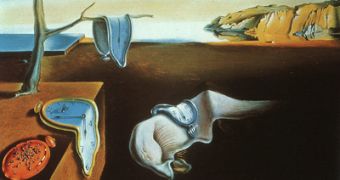The power of gravity leads to the formation of galaxies, stars and black holes but at the same time is like a chain binding us to the ground. Despite its infinite spread, gravity is the least known and weakest of all forces found in the universe. Moreover, researchers can't assess it in the lab as easily as they can see its effects on cosmic bodies.
For instance, the force of repulsion between two positively charged protons is 10^36 times higher than gravity's pull between them, but gravity cannot be explained by Einstein's theory of relativity, which fits in only on large scales.
"Gravity is completely different from the other forces described by the standard model. When you do some calculations about small gravitational interactions, you get stupid answers. The math simply doesn't work." said Mark Jackson, a theoretical physicist at Fermilab in Illinois.
By now, physicists can only guess that gravity is triggered by tiny, massless particles named gravitons, emanated by the gravitational fields, which drag on every piece of matter up to the speed of light. But if gravitons are so common, why is it that physicists cannot detect them?
"We can detect massless particles such as photons just fine, but gravitons elude us because they interact so weakly with matter. We simply don't know how to detect one." said Michael Turner, a cosmologist at the University of Chicago. "We'll eventually ensnare a few of the pesky particles hiding in the shadows of more easily detected particles. What it really comes down to is technology," Turner said.
Currently, physicists are rather trying to confirm the existence of the Higgs bosons, particles related to gravitons that give mass to the matter. Finding elusive particles like the Higgs is something that seems taken from science fiction movies which deal with time traveling. Huge machines are used to accelerate particles up to the speed of light, then smash them together, imitating the enormous bursts of energies present during the early universe, when particles were too energetic to stay together forming more known protons, neutrons and similar particles.
Higgs could have been already detected in the Tevatron, Fermilab's 4-mile-circumference (6.3-kilometer) particle accelerator. But "the new Large Hadron Collider (LHC) circling 17 miles (27 kilometers) beneath France and Switzerland should clearly confirm it within a few years. I think it will be a sigh of relief when the Higgs is discovered. Will particle accelerators, however, eventually pop out a graviton?" asked Turner.
"Showing gravity acts like a wave needs to happen first. Classically, we can measure waves, and waves are made up of particles," said Xavier Siemens, a gravitational theorist at the University of Wisconsin Milwaukee, member of the Laser Interferometer Gravitational-Wave Observatory (LIGO).
"Theoretically, however, we should be able to detect single gravitons," Siemens said. The problem is how.

 14 DAY TRIAL //
14 DAY TRIAL //